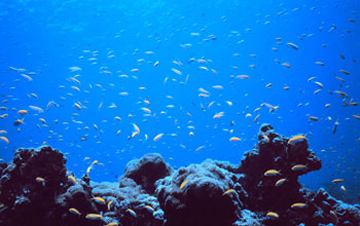300414- kiribati.jpg

The reefs of Kiribati may be protected from global climate change. Credit: National Oceanic and Atmospheric Administration
For the islands of Kiribati, the future looks grim. They’re disappearing beneath a rising Pacific Ocean. But the coral reefs around the islands may have a brighter future. A recent study says the reefs could grow as a result of changes in ocean currents.
The nation of Kiribati consists of 33 small islands close to the equator in the central Pacific. Most of the islands rise no more than a few feet above sea level. Models of our changing climate say that rising sea water will make most of the islands uninhabitable within a few decades. That means the islands will need seawalls and other improvements, or else most of the country’s hundred-thousand residents will have to find new homes.
Most of the islands of Kiribati are atolls — exposed coral reefs that once encircled volcanic mountain peaks. And living reefs continue to build on the flanks of the atolls today.
Warmer oceans are damaging or killing many coral reefs. But a study says the reefs of Kiribati may escape this fate.
Warmer air and water temperatures may weaken an east-to-west current at the surface. But complex models show that a change in the surface current would allow a deeper current, which flows in the opposite direction, to get stronger. As it hits the western flanks of Kiribati’s islands, the deep current brings up cool, nutrient-rich waters that sustain the reef systems. A stronger current would bring more nutrients — allowing the reef systems of Kiribati to thrive even as the islands themselves gradually sink below the waves.

